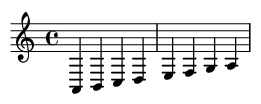The Locrian Mode: Understanding the Darkest Scale in Music
The Locrian mode is the seventh and final mode of the major scale, known for its unstable, dissonant quality. This article explores its construction, musical applications, and practical exercises to master this unique sound.
What is the Locrian Mode?
Musical Examples
Here are practical musical examples to demonstrate the concepts:


The Locrian mode is a diatonic scale that starts on the seventh degree of the major scale. Its distinctive sound comes from having a diminished fifth (tritone) and minor second interval from the root.
Interval Structure
- Formula: 1 - b2 - b3 - 4 - b5 - b6 - b7
- Semitone pattern: H-W-W-H-W-W-W
- Compared to natural minor: flatted 2nd and 5th degrees
Historical Context
Originally named after the ancient Greek region of Locris, this mode was rarely used in classical music due to its unstable nature. It gained prominence in 20th century jazz and modern metal genres.
Technical Construction
Building the Scale
To create B Locrian (from C major): B-C-D-E-F-G-A-B
Characteristic Features
- Root chord: half-diminished (m7b5)
- Contains the tritone interval (root to b5)
- Lacks a perfect fifth above the root
Practical Applications
Jazz Usage
Commonly used over m7b5 chords in iiø7-V7-i progressions. Example in D minor: Em7b5 - A7 - Dm
Metal and Progressive Rock
Favored for its dissonant quality in extreme metal genres. Often paired with chromatic riffs.
Film Scoring
Creates tension in horror/suspense scenes due to its unresolved character.
Progressive Exercises
Beginner
- Play B Locrian ascending/descending on your instrument
- Arpeggiate Bm7b5 chords
Intermediate
- Improvise over a static m7b5 vamp
- Resolve Locrian phrases to tonic minor
Advanced
- Modulate between Locrian and other modes
- Create hybrid scales combining Locrian with other modes
Common Chord Progressions
Typical Locrian progressions emphasize its unstable nature:
- iø7 - bVII (Bm7b5 - A)
- iø7 - iv (Bm7b5 - Em)
- iø7 - bII (Bm7b5 - C)
Notable Examples
While pure Locrian pieces are rare, elements appear in:
- "Army of Me" by Björk (verse)
- Various John Coltrane solos
- Modern metal compositions
Practice Tips
- Use a drone to hear modal colors
- Record progressions to practice improvisation
- Experiment with chromatic approaches